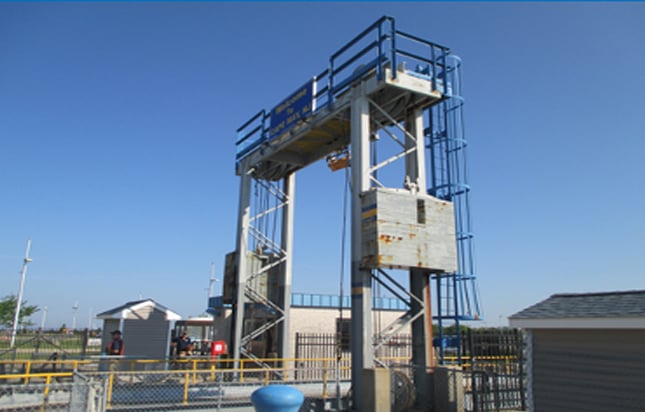
Delaware River Bay Authority
Cape May-Lewes Ferry Terminal Transfer Bridge Improvements

An Opportunity for Growth
Holding up to 100 vehicles and 1,000 passengers, the Cape May-Lewes Ferry is a substantial and important means of travel between New Jersey and Delaware. Age and time eventually wore down the original transfer bridges, necessitating their replacement. S. T. Hudson worked with the Delaware River & Bay Authority to demolish the old structures and design and build 5 new bridges.

Project Goals
As a major mode of transportation between New Jersey and Delaware, the Cape May-Lewes Ferry is integral to both travel and commuting. Ensuring the ferry can run safely and reliably is vital for both states. With this in mind, the goals for this project were as follows:
Replace Bridges
Building five new safe, strong bridges that would endure for years to come was the primary objective.
Upgrade to Modern Standards
Technology has evolved over the past several decades, allowing the bridges to be built with state-of-the-art construction such as sensors and monitoring to ensure bridge health and efficiency.
Ensure Consistency
Keeping operations consistent and reliable is important due to the many who use it for transport, and upgrading all five bridges together ensured that smooth operation would continue.
Allow for Flexible Operations
To avoid delays for commuters and travelers during the busy season, they need the flexibility to operate bridges in the manner that makes the most sense for the flow of traffic.
Key Data Points
5
Ferry Transfer
Bridges
3
Ferries in
Operation
43
Million Passengers
to Date
Project Details
For the Delaware River & Bay Authority, having safe, operational ferry transfer bridges is critical for commuters and tourists traveling between Cape May and Lewes. After nearly 60 years of functioning for the communities, the original bridges were ready for a major overhaul. S. T. Hudson served as the lead engineering firm for this replacement project, planning, designing, and overseeing construction for 5 new bridges.
For nearly 60 years, the Cape May-Lewes Ferry has been serving the mid-Atlantic region of the East Coast, launching its first vessel in 1964 after years of planning. Serving the interests of both states, the Delaware River & Bay Authority oversees operation for the ferry as well as several other structures. With three vessels in operation, the Cape May-Lewes Ferry transports both pedestrians and vehicles for recreational and business purposes. It also serves as an emergency evacuation route. When the ferries dock, they connect to transfer bridges that allow cars and passengers to unload. They’re a critical infrastructure—without the bridges, the ferry wouldn’t be able to operate.
After nearly 20 years of working with the Delaware River & Bay Authority, S. T. Hudson was the ideal partner to oversee the transfer bridge project. The bridges go back to the inception of the ferry line in the mid-1960s, and after years of use and only restorative repairs, the DRBA decided a replacement was in order. With bridges of this age, many original parts can’t be replaced, meaning when something breaks, the whole bridge goes out of commission. S. T. Hudson was tasked with designing new bridges and overseeing their installation. Timing was critical for this project, and S. T. Hudson’s astute precision has been invaluable for this, ensuring that each bridge is out of commission for only 30 days and allowing for continuous operation.
Our Services
- Preliminary field survey
- Drafting of all required project plans and specifications
- Preparation of all local, state, and federal environmental permits required
- Structural design of new transfer bridges and gantry repairs
- Design of all required mechanical equipment
- Develop all required electrical and control systems
- Provide on-site construction management services for:
- Reconstruction of the foundation
- Replacement of the drawbridge and deck
- Replacement of frame and counterweights that raise and lower structure


